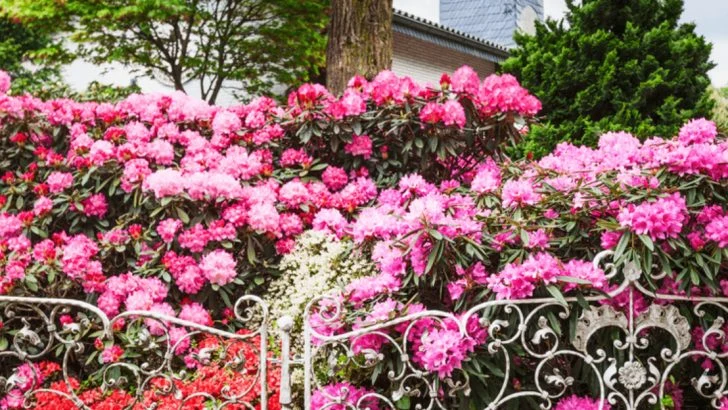Rhododendrons are the epitome of elegance and beauty, making them an excellent choice for designing a breathtaking yard. Their lush foliage, vibrant blooms, and versatility can transform any garden into a stunning landscape. Whether you’re looking to add color to your front yard or create a serene garden retreat, rhododendrons offer endless possibilities.
However, to achieve the best results, it’s essential to understand the unique needs of these magnificent plants. From selecting the right variety to ensuring proper care, knowing how to incorporate rhododendrons into your landscape design can make all the difference. The key is balancing their aesthetic appeal with the right environment, as these plants thrive in specific conditions.
In this article, we’ll explore 12 design ideas to help you make the most of rhododendrons in your garden, along with essential care tips to keep them healthy and vibrant. Whether you’re planting them as a border, as a focal point, or alongside other plants, rhododendrons will bring life and color to your outdoor space for years to come.
Select the Right Varieties
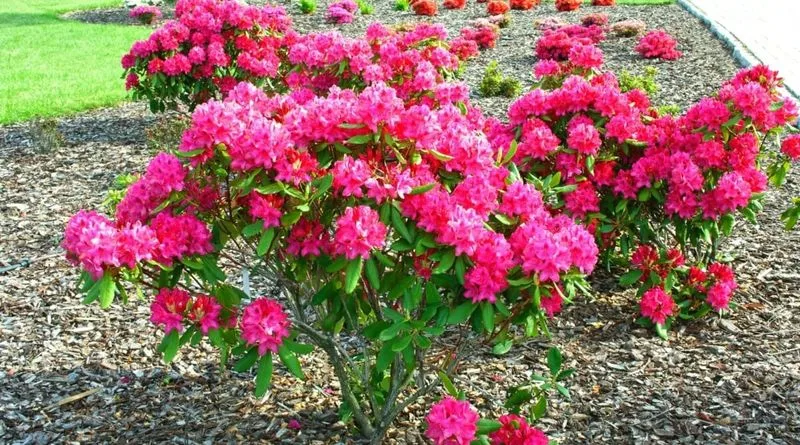
Choosing the perfect rhododendron varieties is key to a successful garden. With countless species available, consider bloom color, size, and climate adaptability. For instance, if you’re in a cooler region, opt for cold-hardy types like ‘Nova Zembla.’ Each choice should align with your garden’s aesthetic and environmental conditions. Mixing different varieties can also extend your garden’s blooming season, offering a vibrant display from spring to early summer. Consult local nurseries or gardening experts to find the best options for your area. Remember, the right selection will ensure a stunning and resilient display.
Optimal Planting Locations
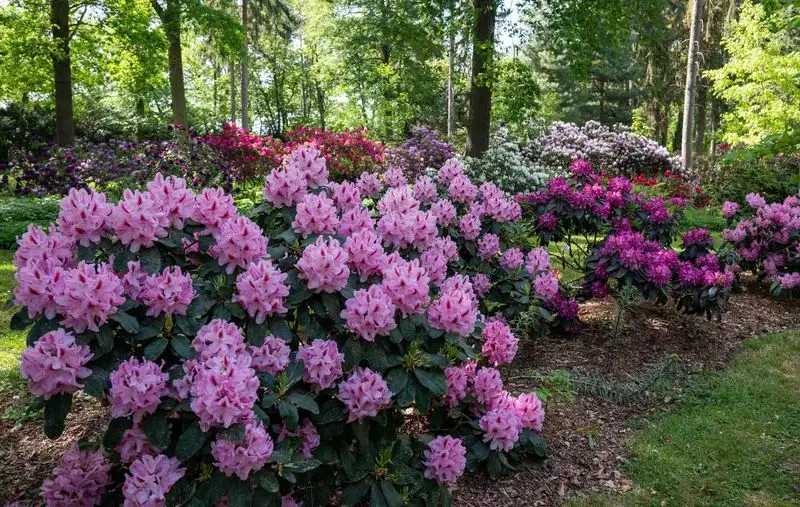
Location is crucial when planting rhododendrons. These beauties prefer well-drained soil and partial shade to flourish. Avoid areas with intense afternoon sun or heavy winds, which can stress the plants. Consider planting under tall trees or alongside shrubs that provide dappled sunlight. Proper spacing is vital too, allowing air circulation to prevent disease. A thoughtful placement not only maximizes growth but also enhances your garden’s visual appeal. Check the soil’s pH level, as rhododendrons thrive best in slightly acidic conditions. This strategic planting ensures healthy, long-lasting blooms.
Soil Preparation
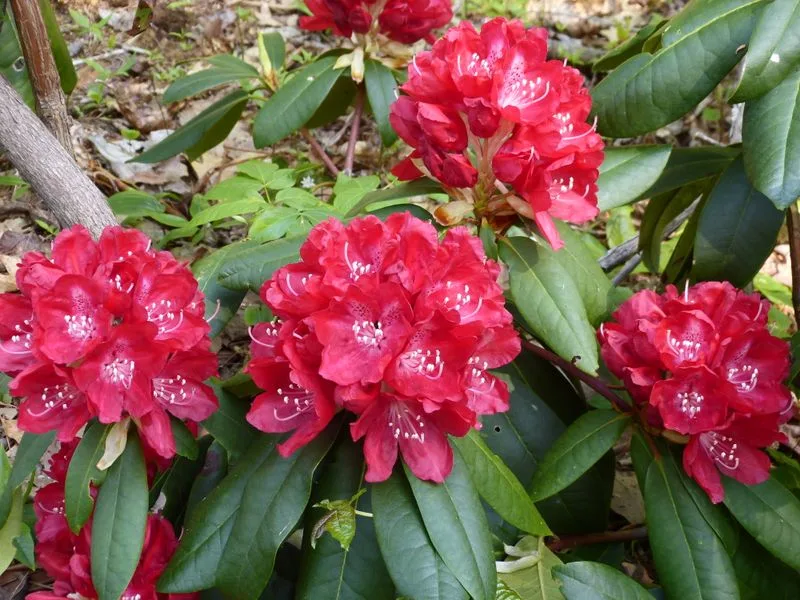
Preparing the soil adequately is essential for healthy rhododendrons. Start by checking the soil’s acidity; they prefer a pH between 4.5 and 6.0. Amending with organic matter like compost enhances drainage and fertility. Raised beds can be beneficial if your garden has heavy clay soil, providing better drainage. Regularly test and adjust the pH to maintain optimal conditions. Mulching with pine needles or bark helps retain moisture and suppress weeds. These steps create an environment where rhododendrons can thrive, rewarding you with lush growth and vibrant flowers.
Watering Wisely
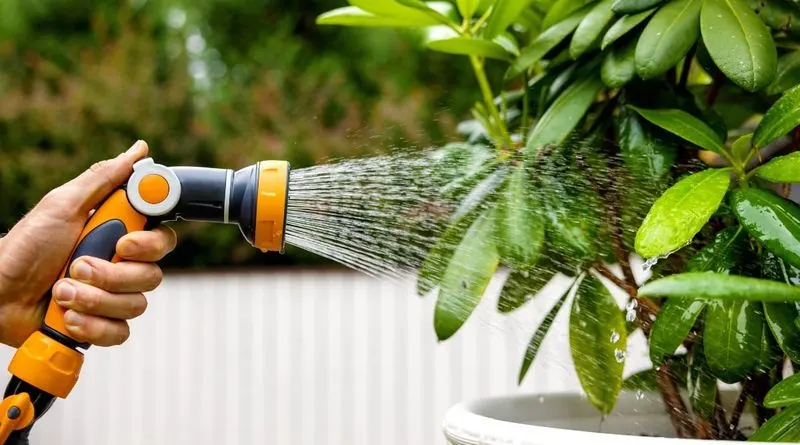
Proper watering is crucial for rhododendron health. They need consistent moisture, especially during dry spells, but avoid waterlogging. Early morning watering reduces evaporation and allows foliage to dry, minimizing disease risk. Mulch can aid in retaining soil moisture. During hotter months, increase watering frequency while ensuring the soil drains well. Over-watering or poor drainage can lead to root rot. By carefully monitoring soil moisture and adjusting your routine based on weather conditions, you ensure robust and healthy growth. This simple yet vital practice supports vibrant blossoms throughout the season.
Fertilization Practices
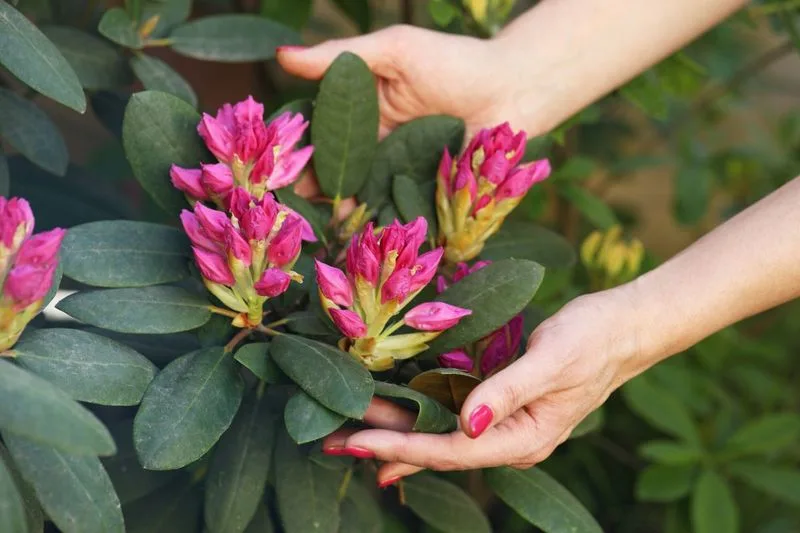
Fertilizing rhododendrons supports their growth and flowering. Use a slow-release, balanced fertilizer designed for acid-loving plants in early spring. Follow up with a second application after blooming. Over-fertilization can harm the plants, so adhere to label instructions or seek advice from local gardening experts. Organic options like fish emulsion or bone meal can also enhance soil fertility. Regular feeding promotes lush foliage and vibrant flowers. Always water thoroughly after fertilizing to help nutrients reach the roots. Tailoring your fertilization approach ensures your rhododendrons remain healthy and visually striking.
Mulching Benefits
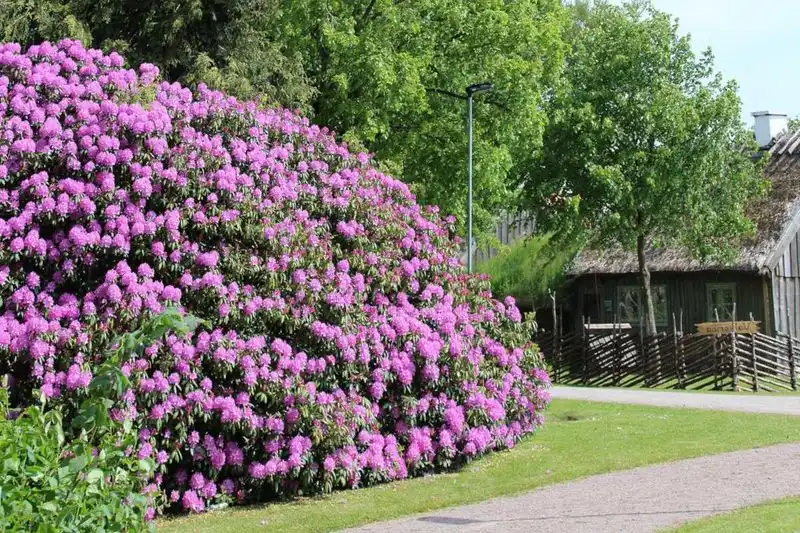
Mulching offers multiple benefits for rhododendrons. It conserves soil moisture, regulates temperature, and suppresses weeds. Organic mulches like pine bark or wood chips decompose gradually, enriching the soil. Apply a layer 2-3 inches thick, ensuring it’s kept away from the base of the plant to prevent rot. Mulching also provides a neat, unified look to your garden, enhancing visual appeal while supporting plant health. Regularly replenish the mulch to maintain its effectiveness. This simple practice contributes significantly to the vitality and aesthetic of your rhododendron display.
Pruning Techniques
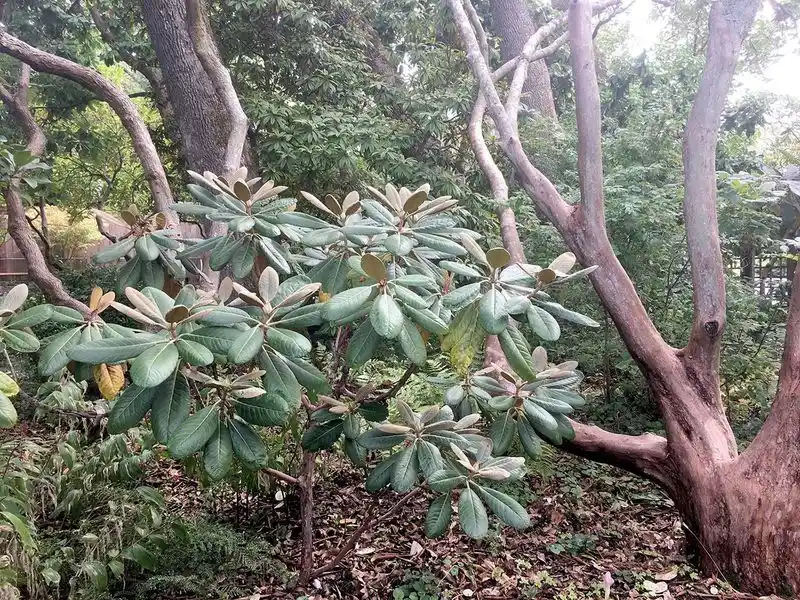
Pruning rhododendrons maintains their shape and encourages new growth. After flowering, remove spent blooms to direct energy toward growth. Prune lightly to shape the plant, cutting just above a leaf bud. Avoid over-pruning as it can reduce next season’s blooms. Occasionally, you may need to remove dead or diseased wood to maintain health. Pruning also improves air circulation, reducing disease risk. Tools should be sharp and clean to ensure precise cuts. By refining your pruning skills, you can enhance the beauty and health of your rhododendrons, rewarding you with a vibrant garden.
Managing Pests and Diseases

Keeping rhododendrons healthy involves vigilant pest and disease management. Regular inspections for pests like aphids or spider mites help catch issues early. Natural remedies, such as neem oil or insecticidal soap, can control infestations. Fungal diseases like powdery mildew are common; ensure good air circulation and avoid overhead watering to mitigate risk. Prune infected areas promptly. Integrated Pest Management (IPM) practices balance prevention and treatment, fostering a healthy garden ecosystem. By staying proactive and informed about potential threats, you maintain the vitality and aesthetics of your rhododendron garden.
Seasonal Care Tips

Tailor your care routine to the changing seasons for thriving rhododendrons. In spring, focus on fertilizing and monitoring new growth. Summer requires vigilant watering and pest checks. Autumn is ideal for soil amendments and mulching, preparing plants for winter. During winter, protect roots with mulch and consider burlap wraps in extremely cold areas. Each season demands specific actions to support plant health and blooms. By aligning your activities with the seasonal cycle, you ensure robust growth and vibrant displays year-round. This thoughtful approach nurtures rhododendrons through every weather change.
Creating a Rhododendron Hedge
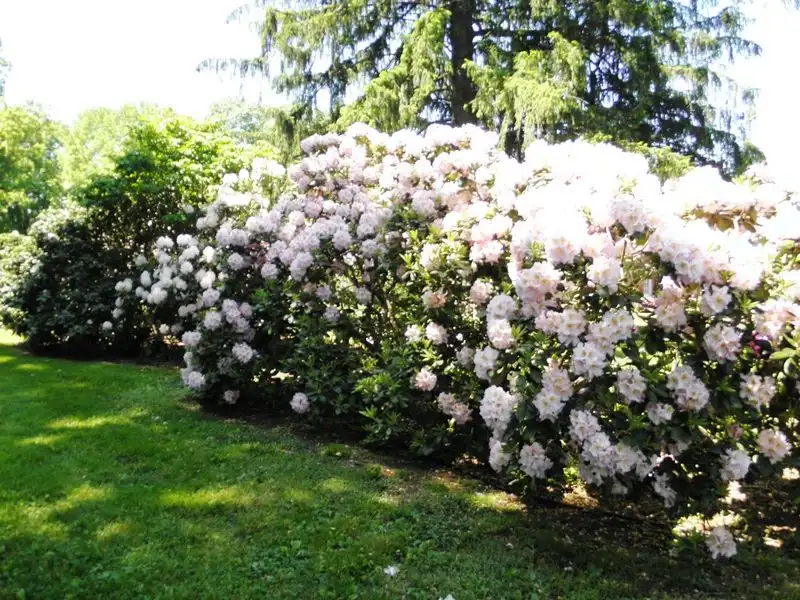
Rhododendron hedges offer beauty and privacy. Choose varieties that suit your area’s climate and garden style. Planting them closely together creates a dense, lush barrier. Regular pruning maintains the desired shape and encourages healthy growth. Such hedges can transform a space, offering structure and seasonal blooms. Consider using different varieties for a multi-colored effect. A well-maintained rhododendron hedge becomes a stunning focal point, enhancing your garden’s privacy. Tailor care practices to maintain vigor and aesthetics. This practical and attractive feature enriches the garden’s charm and functionality.
Designing with Color
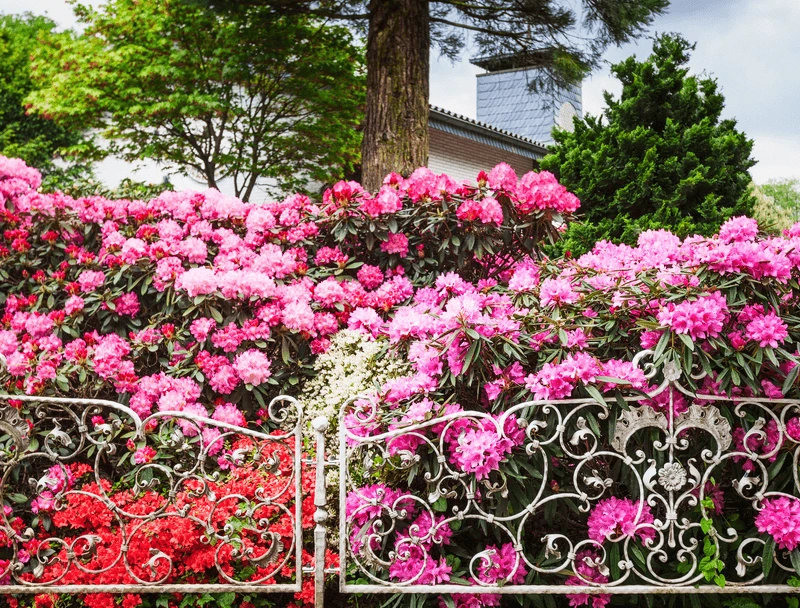
Colorful rhododendrons can be a garden’s highlight. Experiment with different hues to create a vibrant palette. Group complementary colors for harmony, or use contrasting shades for drama. Consider the overall color scheme of your garden and how rhododendrons fit into it. Whites can create a serene atmosphere, while reds and purples add excitement. Adjust your design based on bloom times to ensure continuous color. This thoughtful planning transforms your garden into a picturesque retreat, resonating with personality and style. Embrace creativity in your color choices to make a memorable impact.
Ensuring Longevity with Proper Care
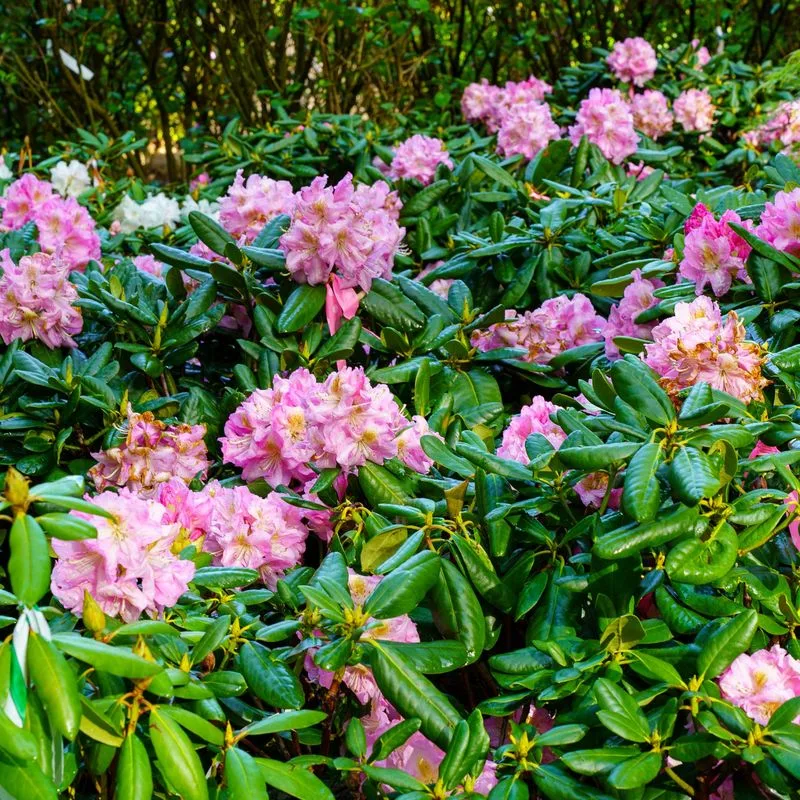
Long-term care ensures your rhododendrons flourish year after year. Routine practices like watering, feeding, and pruning are essential. Understanding each plant’s specific needs, including sunlight and soil preferences, supports longevity. Regular inspections help catch potential issues early, preventing extensive damage. Seasonal adjustments in care routines cater to the plant’s lifecycle. By investing time in learning and practicing effective care, you cultivate a garden that thrives. This commitment results in robust plants and a stunning garden display, offering lasting beauty and satisfaction. Your attentive efforts preserve the garden’s vitality and charm.

